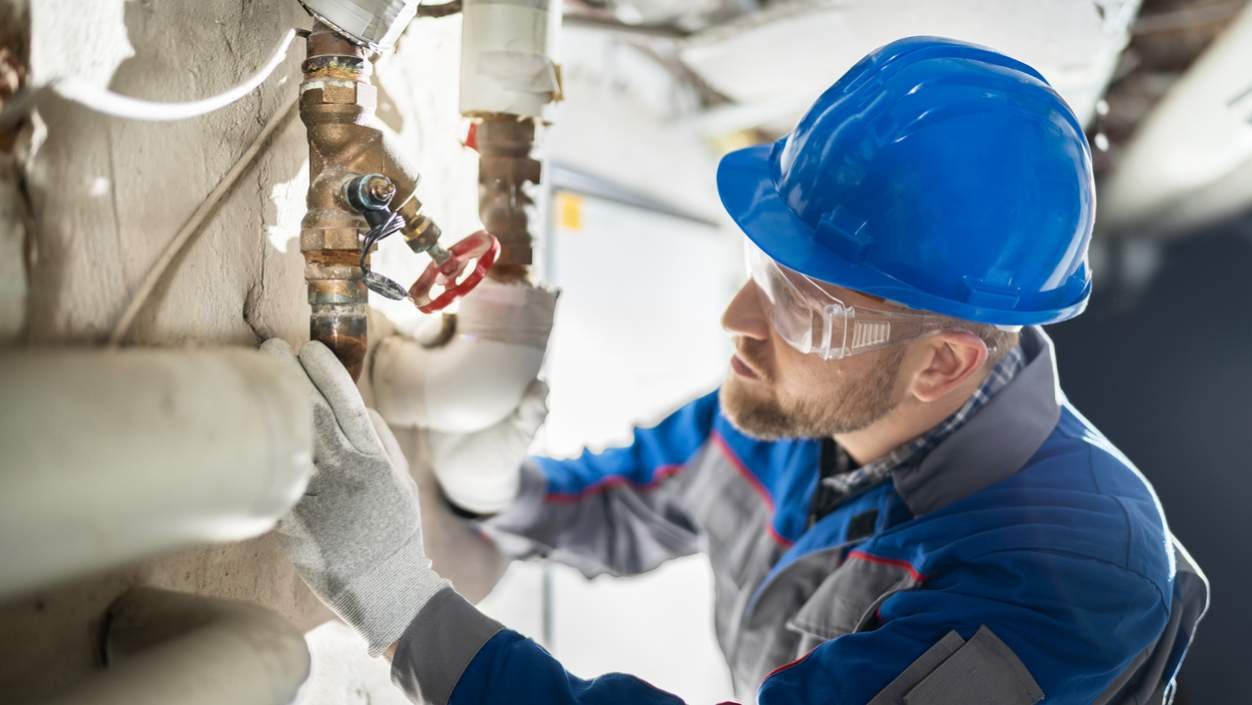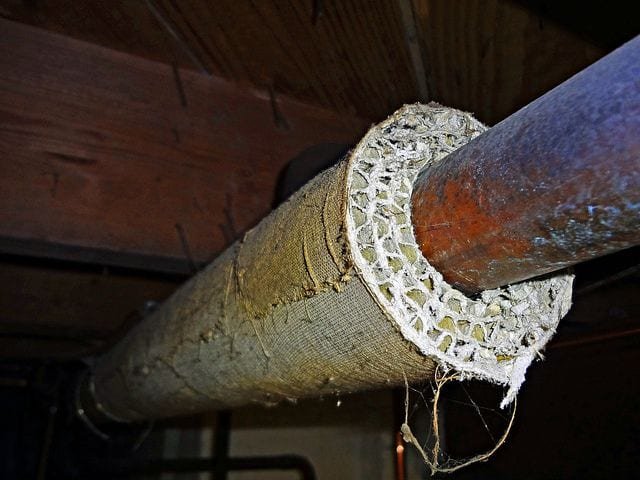When considering copper repiping in your home, it’s crucial to assess potential risks associated with asbestos. The Pro Plumbing team can help evaluate whether this renovation might disturb any asbestos-containing materials in your property. Typically, copper repiping doesn’t directly disturb asbestos unless the pipes are intertwined with or near asbestos-containing materials. However, a thorough inspection by professionals is essential to ensure the safety of your renovation project. It’s always wise to consult experts like The Pro Plumbing to understand any potential hazards and take appropriate measures to mitigate risks during the repiping process.
Understanding Asbestos in Homes
Asbestos, once widely used in homes, poses health risks when disturbed. Professional services in Alhambra ensure safe asbestos handling during renovations. Preventing pipe corrosion involves professional inspections, maintenance, and treatments such as pipe lining or coating to protect against leaks and deterioration. These services not only enhance plumbing longevity but also ensure the safety of occupants by minimizing asbestos exposure during maintenance or upgrades.
Before diving into copper repiping, let’s first understand what asbestos is and why it’s a concern for homeowners. Asbestos is a naturally occurring mineral that was widely used in construction materials due to its heat resistance and durability. It was commonly found in insulation, roofing materials, flooring, and even in some plumbing components like pipes and fittings.
The problem with asbestos lies in its fibrous nature. When disturbed, such as during renovations or demolition, asbestos fibers can become airborne. Inhalation of these fibers poses serious health risks, including respiratory issues and various forms of cancer like mesothelioma.
The Need for Copper Repiping
Copper repiping is essential for addressing common plumbing issues in older homes, such as leaks, low water pressure, and corrosion. This upgrade enhances water quality and delivery, ensuring a reliable and efficient plumbing system. With durable copper pipes, homeowners in Alhambra can reduce the risk of costly water damage and enjoy improved water flow throughout their properties. Copper repiping is a proactive solution that enhances the overall functionality and longevity of residential plumbing systems.
Now, let’s shift our focus to copper repiping. Over time, old plumbing systems in homes may deteriorate, leading to leaks, reduced water pressure, and water quality issues. Copper repiping involves replacing old, corroded pipes with new copper pipes, providing a more durable and efficient plumbing system.
Many homeowners opt for copper repiping to enhance their home’s water delivery, reduce the risk of leaks, and improve overall water quality. However, when dealing with older homes, the presence of asbestos becomes a crucial consideration during such renovation projects.
Assessing the Risk

When assessing the risk of copper repiping in Alhambra homes, consider hiring licensed professionals for comprehensive inspections. Determine the presence of asbestos and develop strategies to mitigate risks during repiping and installation services. Certified experts can ensure safe containment and removal of asbestos if needed, while also executing efficient copper repiping to enhance plumbing systems. By prioritizing safety and expertise, homeowners in Alhambra can enjoy upgraded plumbing without compromising on health or quality.
The key question is whether copper repiping will disturb asbestos in your home. The answer largely depends on the specific layout of your plumbing system and the presence of asbestos-containing materials (ACMs) within proximity to the pipes.
Direct Contact:
In some cases, older plumbing systems may have asbestos-containing materials directly intertwined with pipes or in close proximity. For example, asbestos insulation might have been used around pipes for thermal insulation purposes.
Indirect Impact:
Even if asbestos isn’t directly attached to the pipes, the process of repiping itself can potentially disturb nearby asbestos-containing materials. Vibrations from cutting or removing old pipes, for instance, could release asbestos fibers into the air.
Importance of Professional Assessment
Professional assessments by plumbing services are crucial for identifying potential hazards like asbestos during renovations. These assessments ensure compliance with safety regulations and minimize risks to occupants. Licensed plumbers can accurately diagnose plumbing issues, recommend suitable solutions, and conduct inspections to detect any hidden problems. Their expertise and experience contribute to efficient repairs and upgrades, safeguarding homes in Alhambra and ensuring long-term plumbing reliability.
Given the potential risks associated with asbestos, it’s crucial to involve professionals early in the planning stages of your copper repiping project. Here’s why:
Expertise:
Professionals, such as asbestos abatement specialists or licensed plumbers experienced in dealing with older homes, have the expertise to identify and assess asbestos risks accurately.
Risk Mitigation:
They can develop strategies to mitigate risks, such as proper containment measures if asbestos-containing materials are present and coordinating the repiping process to minimize disturbances.
Legal Compliance:
Dealing with asbestos requires adherence to specific regulations and safety standards. Professionals ensure that your project complies with legal requirements, protecting both your health and legal liability.
Steps for Safe Copper Repiping

For safe copper repiping in Alhambra, CA, start with a professional assessment of your plumbing system by licensed experts. Conduct asbestos testing if necessary, and develop a comprehensive plan that includes containment measures if asbestos is present. Hire certified professionals for the repiping and installation process, ensuring adherence to safety protocols and legal requirements. Post-project testing can verify the safety and efficiency of the new copper piping system in your Alhambra home.
Now, let’s outline the steps involved in safely conducting copper repiping in a home where asbestos is a concern:
Initial Assessment:
Begin by hiring a qualified professional to conduct a thorough assessment of your plumbing system and identify any potential asbestos-containing materials.
Asbestos Testing:
If asbestos is suspected, samples may need to be tested in a certified laboratory to confirm its presence and determine the extent of contamination.
Develop a Plan:
Based on the assessment and testing results, work with professionals to develop a comprehensive plan for the repiping project. This plan should include strategies for asbestos containment or abatement, if necessary.
Containment Measures:
During the repiping process, implement proper containment measures to prevent the spread of asbestos fibers. This may include sealing off work areas, using specialized equipment for asbestos removal, and ensuring workers wear appropriate personal protective equipment (PPE).
Safe Removal:
If asbestos-containing materials must be removed, hire licensed asbestos abatement contractors who follow strict safety protocols for containment, removal, and disposal of asbestos waste.
Coordination:
Coordinate the repiping work with asbestos abatement activities to minimize disruptions and ensure safety throughout the project.
Post-Project Testing: After the repiping is complete and any asbestos removal or containment measures are finalized, consider conducting post-project testing to verify that the area is free from asbestos contamination.
Common Misconceptions
It’s essential to address some common misconceptions related to asbestos and copper repiping:
Asbestos Everywhere:
Not all older homes contain asbestos, and not every part of a home may have asbestos-containing materials. Professional assessment and testing are necessary to determine the actual risk.
DIY Risk:
Attempting to remove asbestos or conduct repiping without proper training and equipment can pose serious health risks and may violate legal regulations. Always rely on licensed professionals for such tasks.
Immediate Danger:
In many cases, asbestos poses a higher risk when disturbed. As long as asbestos-containing materials are intact and undisturbed, they may not pose an immediate danger. However, any renovation or repair work should be approached cautiously.
FAQs
Does PVC pipe contain asbestos?
No, PVC (polyvinyl chloride) pipes do not contain asbestos. PVC pipes are made from synthetic materials and are commonly used in plumbing due to their durability, affordability, and resistance to corrosion. Asbestos is typically found in older plumbing materials such as cement pipes or insulation but is not present in PVC pipes.
How to know if there is asbestos?
To determine if asbestos is present, hire a certified asbestos inspector who can conduct a thorough assessment of your property. They will take samples of suspected materials and send them to a laboratory for analysis. Based on the test results, you’ll receive a report indicating the presence or absence of asbestos and the recommended actions if it’s found.
What percentage of asbestos is in pipe insulation?
Asbestos-containing pipe insulation typically contains around 5-50% asbestos fibers by weight. The exact percentage can vary depending on the specific type of insulation and its manufacturing process. It’s crucial to have such materials tested by professionals to accurately determine the asbestos content and assess any associated risks.
How do you cover asbestos pipes?
Covering asbestos pipes involves encapsulating them with a specially designed encapsulant or wrapping them with approved asbestos pipe wrap. Ensure that the encapsulant or wrap is specifically designed for asbestos containment and meets regulatory standards. It’s crucial to follow safety protocols and consult with asbestos abatement professionals to ensure proper containment and compliance with regulations.
What is the life expectancy of asbestos pipes?
The life expectancy of asbestos pipes can vary significantly depending on various factors such as installation quality, environmental conditions, and usage. Generally, asbestos cement pipes were designed to have a lifespan of around 50 to 70 years under optimal conditions. However, aging and deterioration over time can lead to potential risks, necessitating regular inspections and maintenance.
Conclusion
In conclusion, copper repiping can enhance your home’s plumbing system, but it’s crucial to consider potential asbestos risks, especially in older homes. By involving qualified professionals, conducting thorough assessments, implementing appropriate containment measures, and following safety protocols, you can safely and effectively complete your copper repiping project while minimizing risks associated with asbestos. Remember, safety should always be the top priority when dealing with potentially hazardous materials like asbestos.





